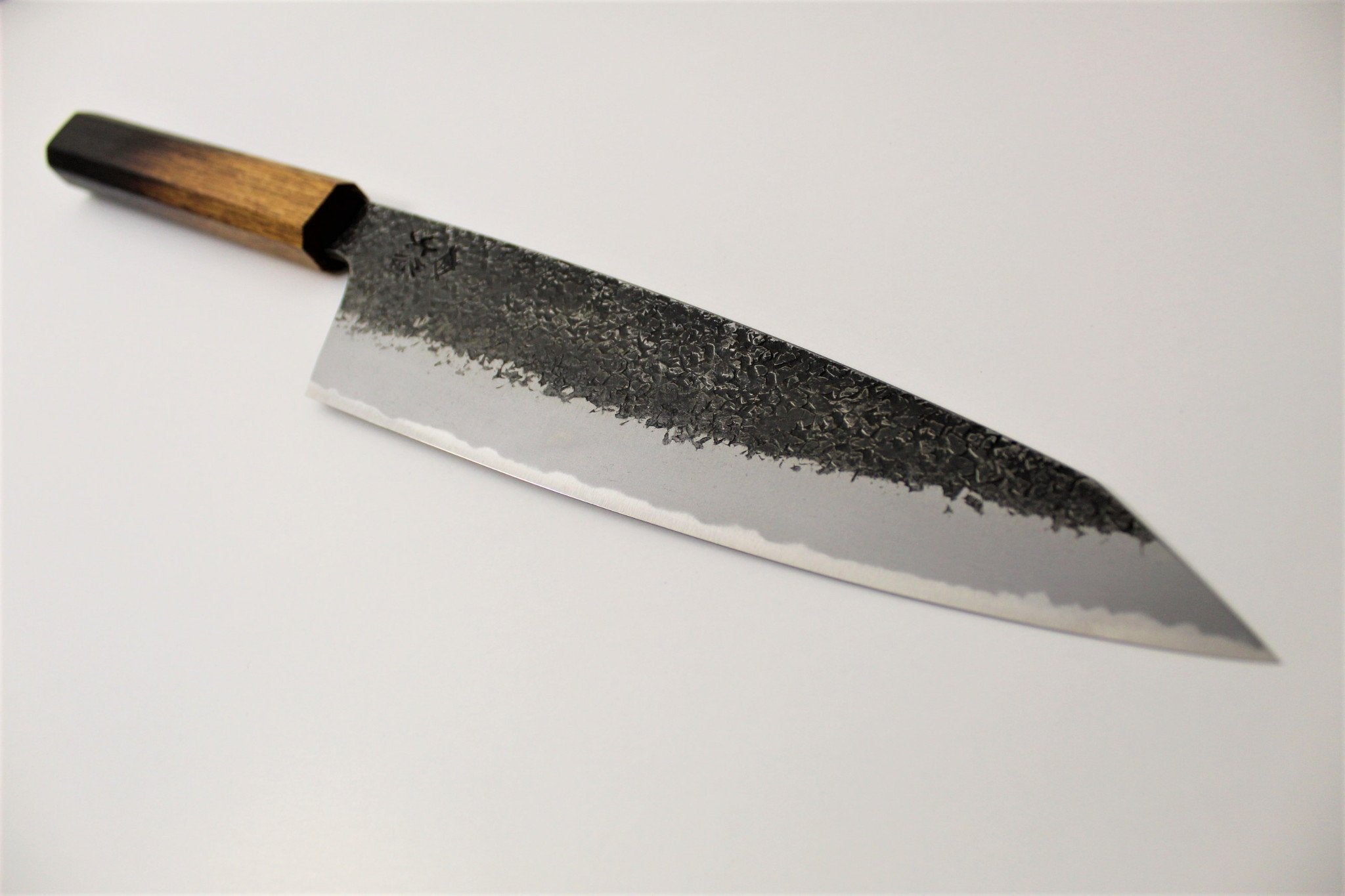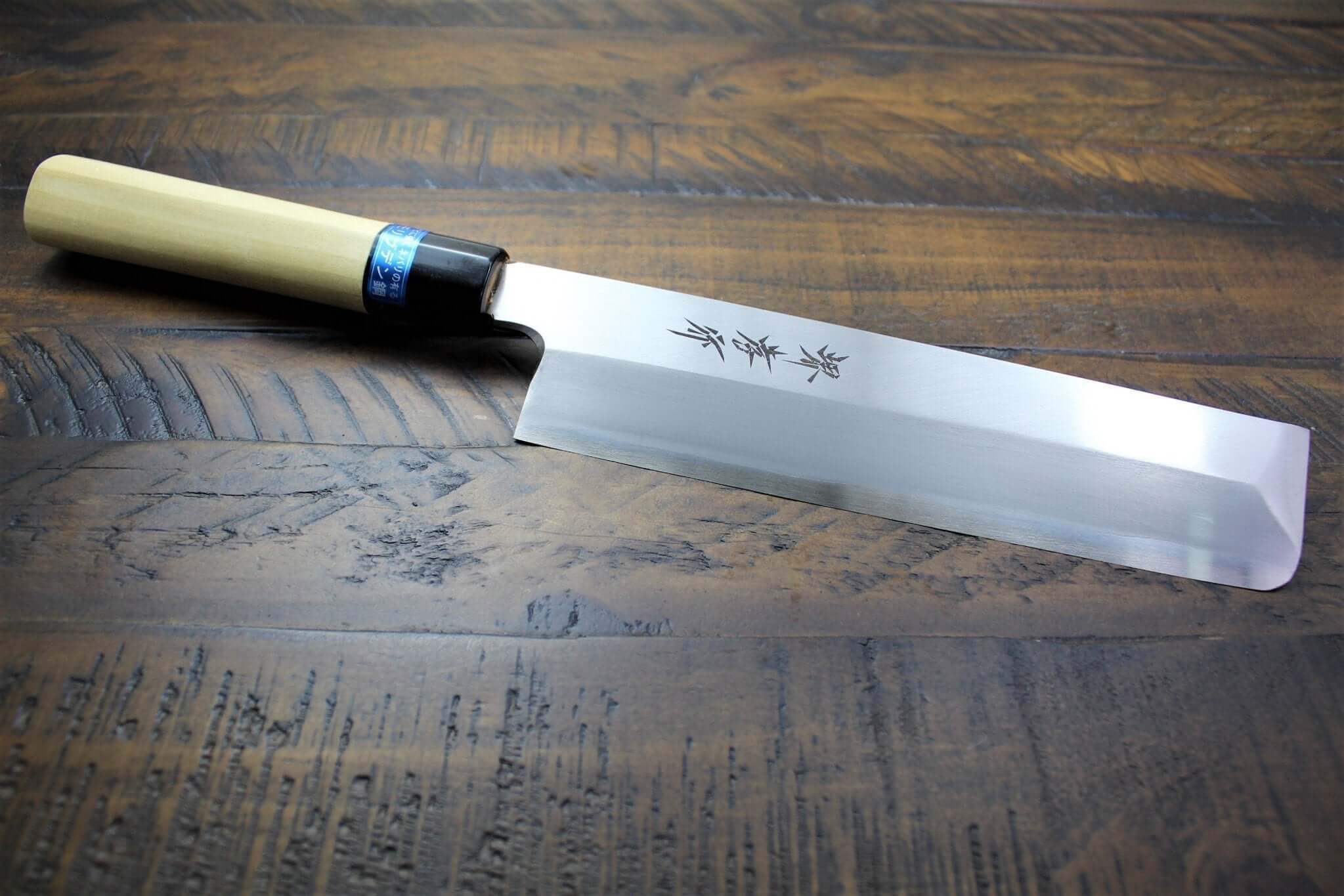
Petty Knife Vs. Paring Knife: A Complete Comparison
When considering which knife to add to your kitchen collection, you may be stuck between two popular choices: the petty knife and the paring knife. Both knives have a distinct role, but their differences make them suitable for different tasks. While both are essential in many kitchens, understanding the nuances of the petty knife vs. paring knife debate can help you decide which one suits your needs better. Let us break it down clearly.
What Is a Paring Knife?
The paring knife is an essential tool in many kitchens. Known for its small size and sharpness, this knife is designed for intricate tasks that require precision. Typically, the blade of a paring knife is 3 to 4 inches long, making it perfect for tasks like peeling, trimming, and cutting small fruits and vegetables. The blade is usually straight and rigid, offering control and accuracy when working with delicate ingredients. Whether you need to remove seeds from peppers or slice small fruits like strawberries, the paring knife is designed for tasks where precision is key.
Paring knives are also easy to maneuver, especially when held in the hand, making them ideal for detailed work. Although their small size makes them ideal for fine tasks, they are not suited for larger, heavier jobs, such as chopping larger vegetables or cutting meat.
What Is a Petty Knife?
The petty knife is similar in shape to a paring knife but slightly larger. Typically, the blade of a petty knife ranges between 4 to 6 inches, providing the perfect balance between versatility and precision. This knife is often referred to as a Japanese petty knife or Japanese utility knife, known for exceptional craftsmanship and sharpness. It is ideal for those who need a more agile tool than a chef’s knife but require something larger than a paring knife. The petty knife is perfect for tasks like slicing, dicing, or chopping smaller vegetables, fruits, and meats.
What makes the petty knife stand out is its design. While the paring knife has a straight blade, the petty knife features a slightly curved blade that helps with rocking motions on a cutting board. It can be used for everything from cutting soft fruits like tomatoes to deboning chicken or filleting fish. Because of these varied petty knife uses, from precise fruit carving to small meat preparation, it is one of the most versatile knives in a modern kitchen. With its combination of precision and flexibility, the petty knife is a must-have in kitchens where versatility is necessary.
Petty Knife Vs. Paring Knife: Key Differences
The petty knife vs. paring knife debate can be broken down into several key characteristics, such as size, blade shape, grip, and weight.
- Size: The paring knife is the smaller of the two. Typically, it has a blade length of around 3 to 4 inches. It is designed for delicate tasks and excels in close-quarters work. On the other hand, the petty knife has a slightly longer blade, ranging from 4 to 6 inches. Its length allows it to handle tasks that require a bit more cutting power while still providing the agility needed for smaller jobs.
- Blade Shape: The paring knife is known for its straight-edged blade, which is perfect for controlled slicing. It is rigid and less flexible compared to the petty knife, which has a slightly curved blade. This curvature in the petty knife helps chefs perform rocking cuts and allows for greater versatility.
- Grip and Handle: The grip on a paring knife is designed for comfort during small tasks and is typically balanced, often with a full tang. The petty knife, however, features a more ergonomic design with a grip placed slightly further from the blade. This positioning allows better control for more precise, refined cuts and gives you better maneuverability on the cutting board.
- Weight: The paring knife is lighter than the petty knife. This lightweight design makes it ideal for tasks where you hold the knife in your hand for extended periods. The petty knife, while still lightweight, tends to be a little heavier due to its longer blade, allowing it to handle a wider range of tasks without tiring your hands.
Which One Should You Choose?
Choosing between a petty knife vs. paring knife largely depends on the types of tasks you perform most often in the kitchen. If you often find yourself working with delicate, small ingredients like garlic, herbs, or fruits, the paring knife is a better choice. Its compact design offers more control for these intricate tasks.
However, if you need a knife that can handle both small, detailed work and medium-sized tasks like slicing vegetables, a Japanese petty knife is the clear winner. Not only does it excel at typical petty knife uses such as peeling, mincing, or slicing herbs, but it can also manage slightly larger preparations like trimming fish or portioning small cuts of meat. With its added versatility, it can easily switch between different tasks, making it a more well-rounded knife for daily use.
Which Knife Offers Better Versatility?
The petty knife is widely regarded as the more versatile knife of the two. While the paring knife excels at small, detailed tasks, the Japanese petty knife can handle larger, more challenging tasks like filleting fish or cutting small cuts of meat. Its ability to cover such a broad range of petty knife uses – from decorative garnishes to precise protein prep - makes it the ideal knife for various kitchen needs.
Maintenance and Care
Both knives require regular maintenance to keep them sharp and functional. The Japanese petty knife, with its high-quality materials, demands a bit more care due to its thinner blade. It requires frequent sharpening to maintain its sharp edge. On the other hand, the paring knife, while requiring less care, still benefits from regular sharpening to maintain its precision.
For both knives, storing them safely is important. A knife block, magnetic strip, or protective sheath are good options for maintaining their condition and ensuring longevity.
Conclusion: A Knife for Every Task
In the battle of petty knife vs. paring knife, both knives have their place in the kitchen, but the Japanese petty knife's added versatility makes it an essential tool for many chefs. Thanks to its wide range of petty knife uses, it can seamlessly handle tasks from delicate vegetable slicing to deboning meat, all while offering the craftsmanship and balance of a true Japanese blade. The paring knife, while small and excellent for precise work, is more suited for specific tasks rather than all-around versatility.
At Hasu-Seizo, we offer a curated selection of the finest Japanese petty knives sourced directly from renowned Japanese artisans. Our knives are handcrafted with precision, ensuring that each one provides superior performance in your kitchen. If you are looking for a reliable, versatile knife that can handle a wide range of tasks, our Japanese petty knives will be the perfect addition to your collection.


